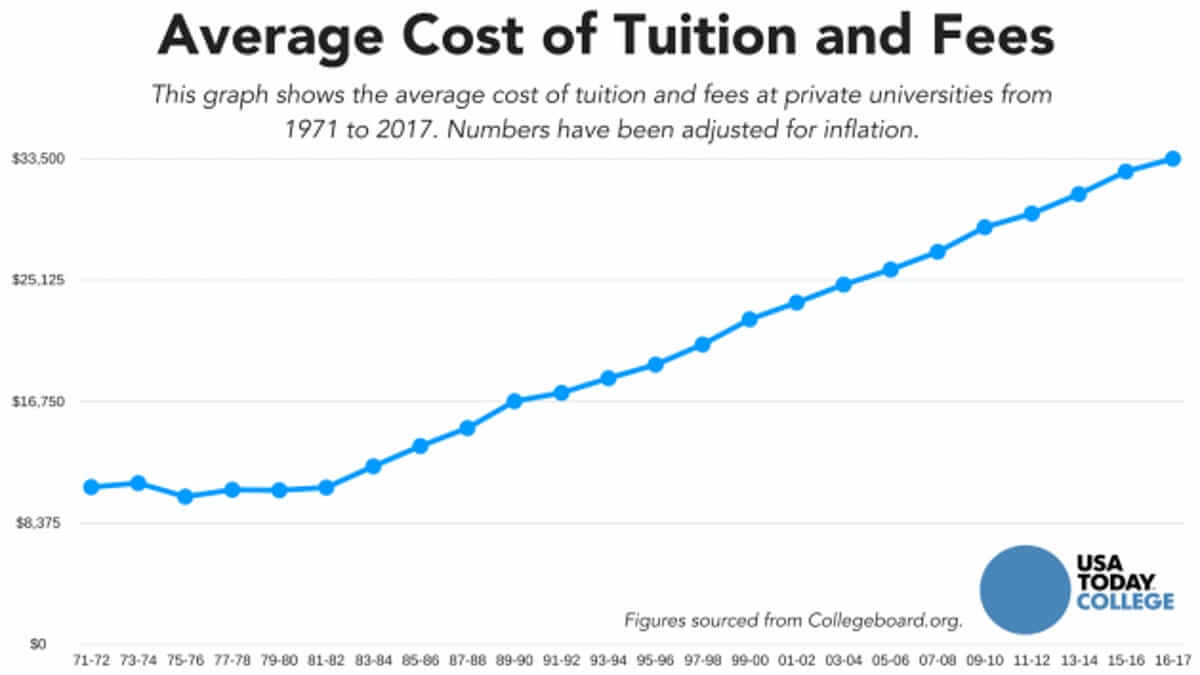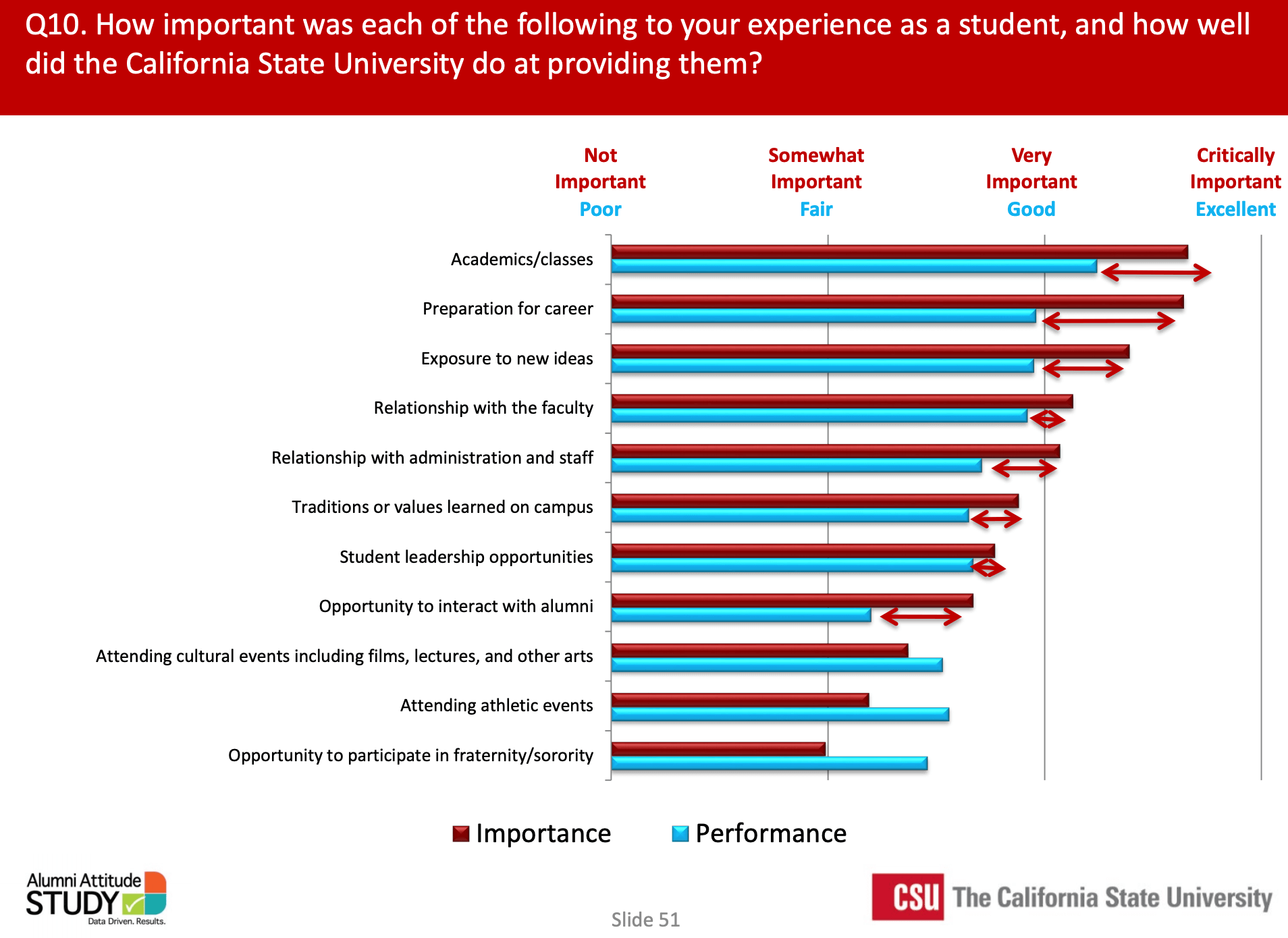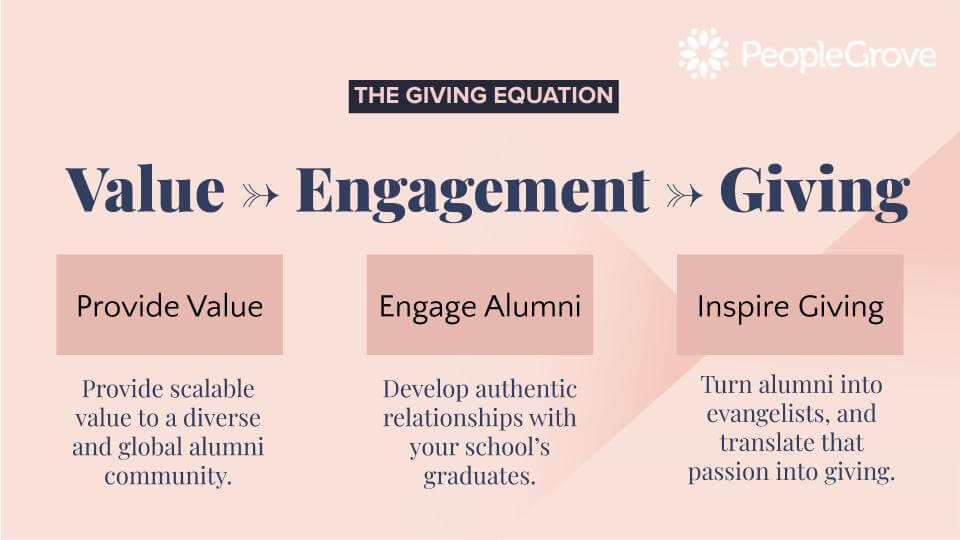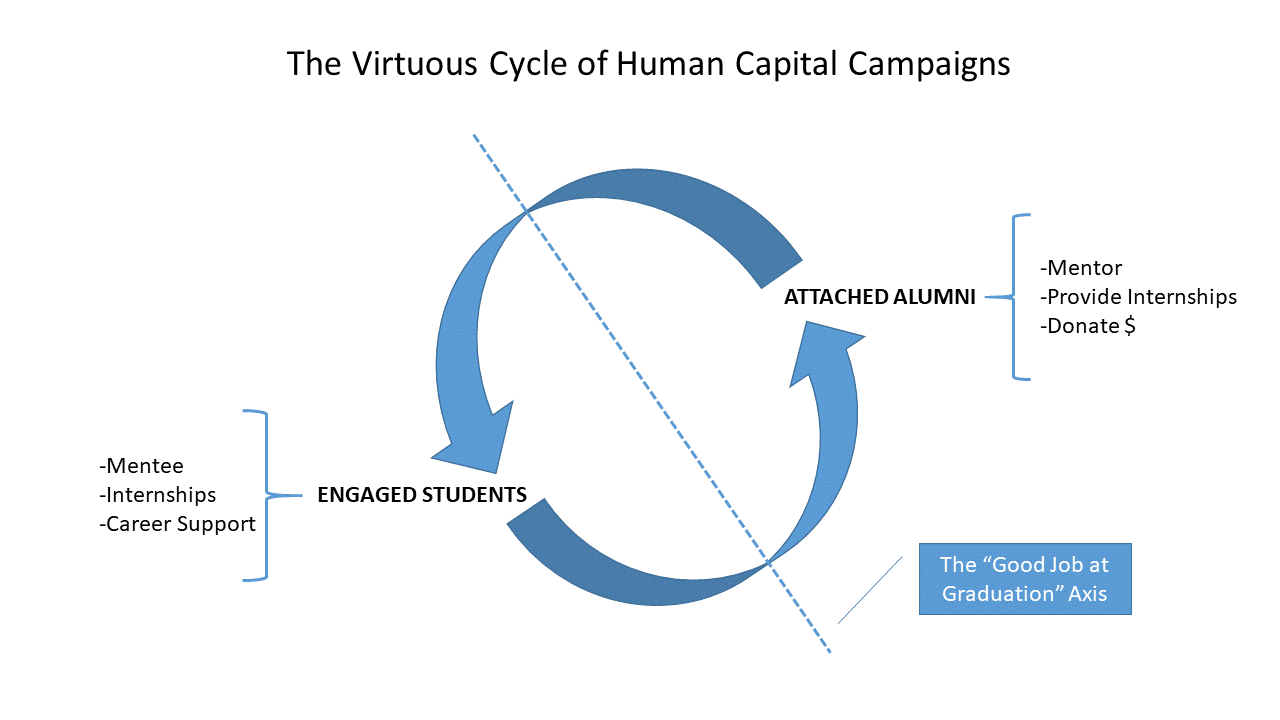Alumni & Advancement
An Institutional Imperative: Meeting the Needs of the Modern Graduate #TheGivingEquation
With the rising cost of tuition and an increasingly competitive job market, world-class institutions are focusing more than ever on […]
Alumni & Advancement
With the rising cost of tuition and an increasingly competitive job market, world-class institutions are focusing more than ever on […]

With the rising cost of tuition and an increasingly competitive job market, world-class institutions are focusing more than ever on how to ensure they’re able to build and maintain alumni affinity to support advancement goals. After all, unhappy and disconnected alumni are unlikely to be receptive to donation solicitations.
Even more than previous generations, the deck is stacked against today’s universities — employers are willing to hire people into professional fields without a college degree, rising tuition costs are leading students to seek alternative routes to career success, state funding cuts require schools to dig deeper into advancement and make their dollars stretch further, and institutions across the U.S. are closing their doors.
Gone are the days where a simple happy hour or tailgate before the big game could induce a flood of donations, so alumni associations are becoming increasingly strategic about how they genuinely engage a global alumni base for a lifetime of giving.
How to do this has become a hot topic in recent years, particularly with the graduation of an increasingly connected and wired generation. But the root question isn’t “How much will alumni give?” it’s “What will inspire them to give?”
What Alumni Need
“Activities that are valued by alumni build enduring and mutually beneficial relationships, inspire loyalty and financial support, strengthen the institution’s reputation, and involve alumni in meaningful activities to advance the institution’s mission.”
-CASE Alumni Engagement Metrics White Paper – August 2018
Universities conduct entire surveys of thousands of graduates in order to find answers to the most fundamental question: What do our alumni want?
The California State University System conducted one such review, compiling the results in their 2018 Alumni Attitude Survey. The questions dived into contrasting the performance of the schools in terms of alumni interaction, as well as the importance of each activity to alumni.

Their findings reflected that of the University of Kansas and countless other schools including Trinity University and Duke University — alumni placed high value on continued job preparation, career support, and mentoring opportunities, and consistently found that their alma mater was not meeting their expectations in these areas. Alumni specifically stated that the importance exceeded performance in these key areas.
This is no surprise, considering the contemporary job market: college graduates need to stay competitive in an employment landscape that evolves more rapidly than ever. Many of the most in-demand occupations, such as data scientists, app developers, or cloud computing specialists, did not even exist five or ten years ago. And don’t forget that grads are now switching jobs more often — sometimes dozens of times throughout their career — and may need support for each transition need.
You can’t train students for roles that haven’t been invented yet, but you can ensure that your institution provides not just a four-year degree, but a lifetime of learning. These alumni will need to continuously strengthen their skills throughout their careers, and build their network of contacts who can give them the insight and feedback they need to switch jobs, industries, or career paths.
These alumni don’t want more donation calls, but instead want an authentic way to stay connected to their classmates, give back to students and other alumni, and advance in their own careers — and most universities are simply not yet ready to meet this demand.
The Giving Equation: Flip the Script
The risk of ignoring alumni needs is steep: one Gallup poll reported that just 9% of graduates felt that their alumni network had been helpful in the job market — and it’s likely safe to assume that not many of the other 91% were generously donating. Meanwhile, Gallup surveys have also found that graduates who found their career offices helpful were more likely to recommend their colleges to others, and were 2.6 times more likely to make financial contributions to the school.
There’s a simple equation to reframe how we think about alumni engagement and university advancement. The concept of “time, talent, and treasure” has been a part of the alumni and advancement conversation for years, but only in the context of what and how we ask alumni to give to us. What if we flipped the script and thought about that adage in terms of what we give to our alumni? Think of it this way:
Provide value. ➼ Engage alumni. ➼ Inspire giving. It’s so simple, yet so effective.

Give the People What They Want: Let’s act on what we learn from surveys.
As the place that students originally received structured career support, alumni often look to their alma maters for continued career education — and in a recent survey conducted by the University of Kansas, 75% of alumni ranked career services as the #1 benefit sought.
The fact alone that so many jobs are shared via word of mouth rather than posted online indicates that relationship-building is a key opportunity for alumni offices. This is why PeopleGrove is so focused on working with universities to engage alumni with a single place for career, community, and connection. We believe this is a fundamental element for an effective alumni program and crucial to the sustainability of higher education.
It’s important to recognize that alumni affinity and engagement starts long before students become alumni. The most active and successful alumni networks will be homegrown — the result of programming that shows students what giving back looks like, and then motivates them to contribute upon graduation.

As a result, alumni seek value through a number of career phases, from their first career move, to expanding their professional network, and through paying it forward to hire and mentor students.
Making an alumni network useful takes work and intentionality — but you’re not alone. This is where we can help.
Doing the Math
Our partners have seen that a clear increase in alumni engagement through our platform leads to increased philanthropic opportunities. This increase is comparable to the effect that an in-person event, or event series, may have on the engagement level of alumni.
However, given the nature of the PeopleGrove solution, alumni offices have been able to reach a greater number of their constituents and scale this engagement. Instead of planning regular events across 30 major metropolitan areas in the U.S., they can manage to reach all of these people — and also ones in more rural areas, or internationally. Thus, alumni offices can see greater ROI on a per-alum basis than they would otherwise.
At Villanova University, 14,000 students and alumni joined the Nova Network—providing countless opportunities for mentoring, networking and career support. Surveyed immediately after each exchange, alumni and students have ranked their interactions at an average of 4.6 on a 5.0 scale.
Georgetown University is another success story. When they started using PeopleGrove, mentorship opportunities between students and alums increased 75% in comparison to the prior year when they were using a different system — a distinct difference indicating true engagement (rather than one-and-done check-ins).
Even better: they saw donation rates also rise. The donor participation rate across participants on the platform was measurably higher than the average participation rate university-wide. They then used the platform to help steward major gift donors and create highly curated touch points that led to increased philanthropic opportunities with these donors.
See the Difference
Colleges and universities around the world are seeing their alumni networks thrive with help from PeopleGrove. Reach out for more information today — we’ll be happy to show you the platform that advancement professionals love.